The following is an excerpt from Reopening the World: How to Save Lives and Livelihoods, a new report where Brookings experts offer ideas to help policymakers protect lives and save livelihoods in the midst of the current COVID-19 pandemic.
 The COVID-19 pandemic dramatically re-confirms that the United States is a member of a global community of countries and cannot isolate itself from global dynamics, trends, and threats. A retreat into an America First mentality will not insulate the United States from the spread of infectious pandemics or allow its own economy to thrive. As America reopens, it will have to take into account the needs and interests of its neighbors and foster crucial collaboration beneficial to all. U.S. relations with Mexico are a prime example of the need to deepen collaboration and harmonize policies from integrated supply chains to public health issues and develop harmonization procedures and structures that last beyond the first wave of COVID-19.
The COVID-19 pandemic dramatically re-confirms that the United States is a member of a global community of countries and cannot isolate itself from global dynamics, trends, and threats. A retreat into an America First mentality will not insulate the United States from the spread of infectious pandemics or allow its own economy to thrive. As America reopens, it will have to take into account the needs and interests of its neighbors and foster crucial collaboration beneficial to all. U.S. relations with Mexico are a prime example of the need to deepen collaboration and harmonize policies from integrated supply chains to public health issues and develop harmonization procedures and structures that last beyond the first wave of COVID-19.
HARMONIZING SUPPLY CHAINS
The different timing of the spread of COVID-19 in the United States and Mexico, and thus the different anticipated timing of reopening the economies of each country, dramatically exposes the need to urgently coordinate and harmonize the management of integrated supply chains between Mexico and the United States, taking into account their public health dimensions. As the United States reopens its economy many U.S. manufacturing companies, such as automakers, as well as the Trump administration, including the Department of Defense, have pressured Mexico to reopen the foreign-owned maquilas (factories) in the north of the country that supply the United States with product components for everything from automobiles to specialized medical equipment to television sets.
Yet, the maquilas that are not automated like in the United States, and employ hundreds of thousands on Mexicans who work shoulder to shoulder on assembly lines, have been declared as key sources of infection by Hugo López-Gatell Ramírez, Mexico’s deputy health minister. Maquila workers themselves have expressed grave concerns about risks of contracting COVID-19 on the assembly lines and complained about the inadequate provision of social distancing opportunities, protective equipment, and paid leave when they become infected. In a Lear Corporation factory producing car seat covers in Ciudad Juárez, 13 workers have died of COVID-19. These complaints have been seized upon by Mexican politicians who have conducted health-inspection raids on maquilas, dramatically shutting them down in front of TV cameras. Most U.S. and other foreign maquila owners have rejected the complaints, claiming that the COVID-19 protections they provide on the assembly lines are adequate. As of May 14, Mexico had 40,186 confirmed cases of COVID-19 infection and 4,220 deaths attributed to the illness, both numbers widely believed to be significant undercounts but both rising rapidly. As of mid-May, the pandemic is far from under control in Mexico.
Under pressure from the United States and facing a dramatic economic downturn that eviscerates its social redistribution objectives, the administration of Mexican President Andrés Manuel López Obrador (AMLO) flip-flopped in response. It first resisted U.S. pressure for public health reasons, then agreed to open the maquilas and mining and construction industries on May 18, then shocked the Trump administration and U.S. companies by backing away from the reopening. As of May 15, it intends to start reopening those industries and production facilities on June 1.
The United States government and U.S. manufacturers cannot be indifferent to health of Mexican workers and, due to COVID19’s spread, to the health of all the country’s population. Mexican lives matter to the United States—not just for humanitarian reasons but because the U.S. will not be able to maintain much needed collaboration with its vital neighbor and partner on a wide range of issues if it acts with utter selfishness toward the deaths and disasters in Mexican communities. The need for concern by the United States is urgent, since the AMLO administration has been egregiously slow in adequately responding to COVID-19 and locking down the country.
U.S. indifference would also be myopic: U.S. citizens travel to Mexico for a wide variety of reasons—not just for tourism, but also for access to cheaper healthcare and to visit their families, some of whom may well work in the maquilas. If Mexico’s COVID-19 infection festers and Mexico keeps suffering waves of reinfection as a result of premature reopening without adequate safeguards, the chances are high that the pandemic will spill back into the United States, compounding health and economic suffering here. If, with U.S encouragement, Mexico had not shut down the country in 2009 as the H1N1 swine flu was spreading—a shutdown that cost Mexico $9 billion—U.S. H1N1 deaths would likely have been far higher than the 10,000 Americans who died from the epidemic.
But the North American Plan for Avian and Pandemic Influenza that enables coordination among the United States, Mexico, and Canada on viral pandemics like COVID-19 (of which neither the Trump nor AMLO administrations took adequate advantage), however, does not address economic issues, such as harmonizing supply chain production and restarting during times of pandemics.
RECOMMENDED ACTIONS
To enable a healthy restart of the economies of both the United States and Mexico and to ensure both countries are better prepared to withstand further disruptions to supply chains, such as in following waves of COVID-19, the following measures should be undertaken:
- Both countries need to agree on a strong emphasis of significantly improving health-protection measures in the maquilas to limit the spread COVID-19 beyond wave one of the pandemic, mitigate the spread of future infectious diseases in the maquilas, and address other health concerns in the maquilas. Binational inspection teams of health and technical experts should conduct the inspections, so that they become neither politicized nor persist in their current state of allegations and dismissals. Live close-circuit TV feeds can be mandated to be made available to the health inspection technical teams for constant monitoring beyond one-time unannounced visits.
- Rapidly, the United States and Mexico should establish a joint decision-making team composed of government officials, technical experts, and industry representatives to determine what industries and what types of production are genuinely vital and essential and need to come online fast. Such a committee would be able to assess the validity of claims that maquila pencil production is “vital” (because nurses and doctors use pencils). The joint team would also evaluate existing stockpiles to determine whether any shortage of supply is imminent and thus whether a maquila can remain shut down. Since there may well be situations where both countries will not agree what an essential industry is—for example, Mexico may not agree that parts of U.S. weapons manufacturers should be deemed essential to risk Mexican lives—each country could have the right to deem up to three industries as essential beyond the those jointly agreed upon.
- Such a joint decision-making body, comprised of a significant number of technical experts, would reduce the political controversies and resentment that the tone and form of U.S. pressure has taken—from tweets by U.S. Ambassador to Mexico Christopher Landau, widely interpreted in Mexico as threats, to the fact that the U.S. Defense Department took the lead in pressuring Mexico to reopen maquilas—which have reignited Mexican sensitivities about American imperialism.
- Clearly, Mexican maquilas producing medical supplies, such as ventilators and personal protective equipment (PPE), should continue operating—with proper necessary health precautions. Those must include sick pay for maquila workers who become infected so they do not feel forced to continue working in order not to lose pay or employment. If they continue working, they will only infect more workers in essential industry sectors.
- But the United States must also take into account Mexico’s needs and the flows of people and products from the United States to Mexico. It must allow an adequate supply of medical equipment and PPE to go to Mexico, and not cynically insist that all of it go to the United States while Mexico’s need to save lives is ignored.
- Mexico must also be assured that it will get critical—and safe—food supplies from the United States, such as meat processed in ways that prevent the spread of infection to dairy products. That requires that the United States guarantees it will keep adequate food supplies flowing to Mexico but exercise strong health-control measures at U.S. food production places and during transport. Three major U.S. meat producers have experienced significant outbreaks of COVID-19 among their staffs and across their plants around the country, with at least 3,300 workers sickened by April 25 and at least 17 dying from the disease. Like in Mexico’s maquilas, many workers in the meat plants, some of whom are immigrants, have raised concerns about the lack of guaranteed sick leave, PPE, and other necessary health measures. And as with the maquilas, inadequate public health measures expose not only the workers themselves and their families to grave risks, but entire communities.
- Finally, the United States and Mexico must coordinate their policies on the flow of people from the United States to Mexico by land. While air traffic is limited and includes health controls, and while the U.S.-Mexico border has shut down northbound travel by land for non-essential personnel such as nurses living in Mexico and working in the United States and non-essential cargo, the southbound travel remains open and uncontrolled. That means that infection can continue spreading from the United States to Mexico. Serious health control measures need to be implemented on the southbound traffic.
WHY THE WALL DOES NOT HELP PUBLIC HEALTH
Neither public health, nor public safety, however, will be enhanced by the border wall that the Trump administration has sped up building. In fact, the wall—in actuality, tall steel bollards— undermines both public health and U.S. national security while failing in its stated objectives of minimizing the flow of drugs, crime, and undocumented migrants into the United States.
With the U.S. presidential election approaching, the Trump administration is making a renewed push to fence off the 2,000-mile U.S. border with Mexico, promising to add more than 500 miles of new barriers by early 2021. As of April 23, 170 miles had been built, mostly replacing previous fencing in other parts of the country. Another 480 miles of border barriers were built by previous administrations.
Building the wall is a massive economic drain amidst the dire state of the U.S. economy. Adding one new mile of the bollard wall in southern Texas where border land is mostly privately owned, and the Rio Grande river forms the line of separation, costs some $30 million. At a time when 33 million Americans have lost their jobs so far as a result of the COVID-19 pandemic, spending $30 million on a single mile of pointless, ineffective, and counterproductive fencing is an egregious waste of money. Spending the money on economic assistance to the unemployed and small and midsize businesses that can be drivers of renewed employment would be far wiser. Beyond the $18 billion the current version of the wall is projected to cost, President Trump wants to spend an additional $500 million to $3 billion on painting the wall black so that those who attempt to scale it get their hands burned. But that brutality would once again be an egregious waste of money badly needed for post-COVID-19 recovery since it would be easily defeated by wearing gloves.
At a time when 33 million Americans have lost their jobs so far as a result of the COVID-19 pandemic, spending $30 million on a single mile of pointless, ineffective, and counterproductive fencing is an egregious waste of money.
Dangerously, the Trump administration continues to fund the wall with money commandeered from the Department of Defense against the explicit wishes of the U.S. Congress representing taxpayers’ interests. This year alone, the administration plans to divert an additional $7.2 billion from the military budget, having already diverted $6.1 billion before. These seized funds have come not only from the Department of Defense’s counternarcotics accounts, but also from vital national security programs, such as ballistic missile and surveillance planes programs for keeping the United States safe from actual grave security threats.
Nor will the new fencing prevent the flow of drugs and undocumented workers into the United States. In just one month last fall, smuggling crews using ordinary and easily accessible battery-operated tools, costing as little as $100, cut 18 holes through the bollards large enough to allow adults to crawl through. Since they push back the separated bollards to hide their entry points, the actual number of smuggling points may be far larger. Although COVID-19 has temporarily disrupted both legal and illegal logistical chains, both drugs and people are smuggled into the United States, most frequently hidden in legal cargo containers. Smugglers have many other methods available, from tunnels to boats to drones, that render the wall useless.
Meanwhile, the construction processes of building the wall often do not follow proper social distancing and other health protective measures, thus raising the risk that the wall will contribute to the spread of the COVID-19 infection among local communities. Among the most vulnerable are Native American communities on both sides of the border. Even before COVID-19, the construction of the wall caused irreparable damage to their homelands, cultural and spiritual heritages, burial grounds, economies, and local environment.
I note in my reopening piece on wildlife trade and conservation that, at a time when the COVID-19 pandemic and the deaths, health damage, and economic calamity it causes globally should prompt us to preserve natural habitats and 31 protect biodiversity, the wall causes immense environmental damage. From drying up precious surface water and aquifers in New Mexico, to leveling century-old saguaro cacti in Arizona, to threatening to destroy the National Butterfly Center in Texas, the wall fragments and imperils habitats and threatens tens of endangered species, such as jaguars, ocelots, and the Mexican wolf as well as pollinators vital for U.S. food production.
The COVID-19 pandemic poignantly highlights that increasingly the health of U.S. communities and our economy and natural habitats cannot be separated from the health of our neighbors and indeed the world. Building collaborative relations with neighbors such as Mexico and emphasizing mutual interests in developing harmonized policies is essential for achieving public health and economic recovery.
The Brookings Institution is committed to quality, independence, and impact.
We are supported by a diverse array of funders. In line with our values and policies, each Brookings publication represents the sole views of its author(s).
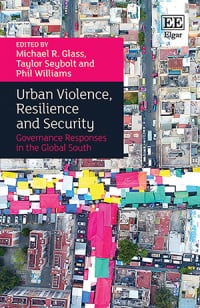

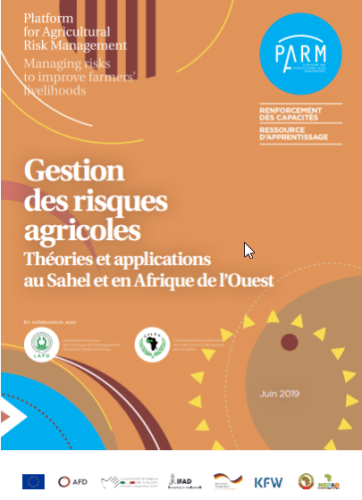

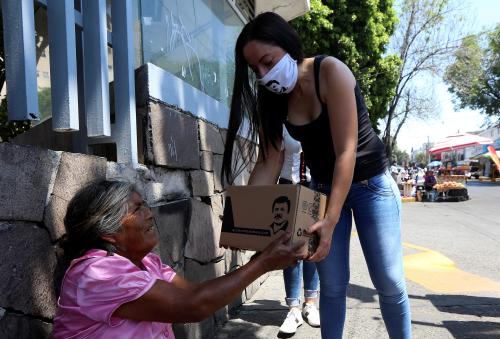
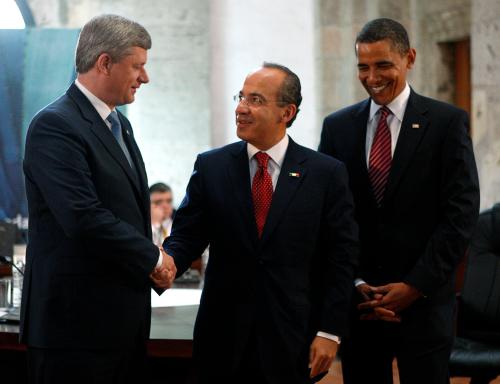


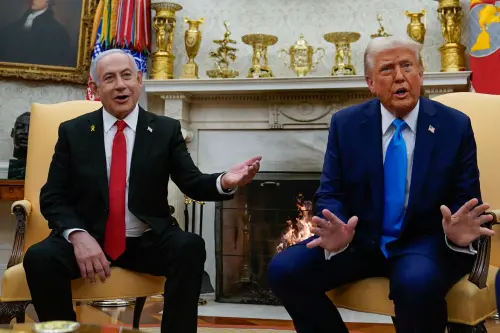
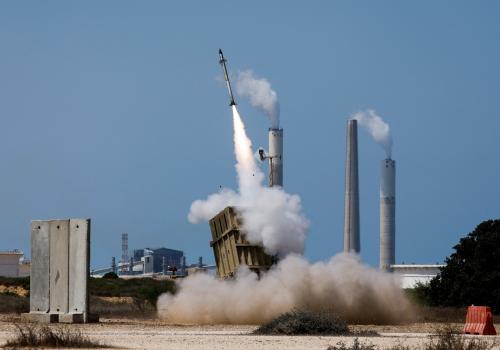
Commentary
Reopening the World: Walling off Mexico will not work
June 16, 2020